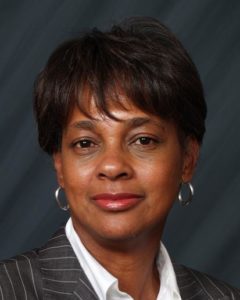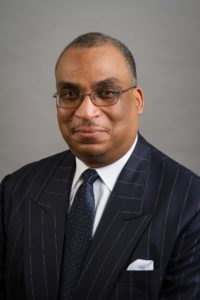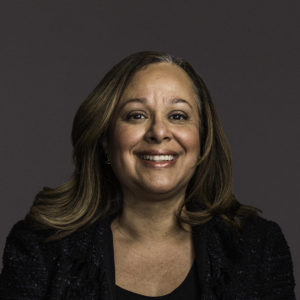Recently Fund Directions has been reporting on the issues around diversity and mutual fund boards. Many people of color and women in the industry say they still see colleagues with a lack of commitment to finding diverse candidates because of the additional time and effort it can often take.
They advocate taking, what some can find, the difficult step of rejecting candidate lists from search firms that don’t show diversity and utilizing minority networking groups to boost the pool of eligible people. Looking outside the asset management industry for board talent is another recommendation.
Oakmark Mutual Fund director Steven Rogers also provided insight, in a thought piece he recently wrote, on how directors can support African American communities here and now.
In our continuing coverage below board directors of color speak to why increased representation is the only path forward:
Luis Ubiñas, Mercer Funds

All funds need to understand — that we are entering a radically different era. 20% of the new workforce, people entering the workforce today, for example, are Hispanic. More than a third are Hispanic and Asian American.
The idea that those investors — because of course, those people will rapidly become investors through their companies or on their own — the idea that a fund can understand the need of its consumers, understand the level of care and concern consumers might have when they don’t have representation that reflects the diversity of their clients is clearly something that has to be addressed.
How can you think about not changing in a world that is so changed?
[Latinos are] often lost in the dialogue in part because they are emerging as dominant forces in the investment and workplace. [Latinos and Asian Americans are] starting businesses at rates that exceed those of other groups [and] you’ve got to ask yourself, what are the funds needs of those people? How quickly will they become my primary customer?We know how quickly. We know that sometime around 10 or 15 years after they enter the workforce they start being the core drivers of savings. And so we have this window where we have to begin to ask ourselves, are we comfortable not having representation on fund boards of groups that represent our largest fund participants?
And in a world that’s, you know, half Latino, Asian American and African American, can you have a board that has no representation from any of those groups? Is that even viable, and for how long can that persist?
We have a divergence between who the typical customer is going to be, and who serves on these boards. And over time, that gap is going to have to narrow.
For decades, athletic records fell in a linear way. For centuries, literally . . .then all of a sudden, there was a vast expansion in the kind of people who got to participate. Poor people got to participate, people from all over the world got to participate, people of color got to participate and all of a sudden, records started falling in a non-linear way. I think the same is true with intellectual pursuits.
I think the more people you get involved, the more people of amazing capability you’re going to find. And the more diverse voices at the table, the more you’re likely to be not surprised by what happens next. Surprises often come from not having the people you need at the table.
If you’re going to avoid readily avoidable pitfalls, you need diversity of perspectives at a table.
You can’t expect to have good decisions when you don’t have good input, and good input requires diversity of voices, especially in an industry that will increasingly be reliant on the contributions, on the savings, of a vastly diverse workforce.
If you want to understand those new consumers, you’re going to have to have them represented.
Any board that finds itself in a situation where it can look around and not see the kind of diversity that reflects the country we now have is a board that has work to do. [That’s a] kind of board that’s taking unnecessary risk.
Liz Levy-Navarro, Wilshire Funds

It’s important that the boardroom reflect the investors we serve and the values that matter to them if we want to ensure that we’re providing good governance.
To me, greater inclusion, which means diverse viewpoints, perspectives and backgrounds, is not just the right thing to do, but is also good governance. It offers richer board discussions, improved problem solving, and aligns us more to the shareholders we serve.
In addition to women and people of color, age is important. A lot of fund families have 75 as their retirement age, and, if you look at some boards, you can find that they are almost solely made up of those in their late 60s and in their 70s. Boards benefit when they reflect investors in terms of age range and life stage. And that could mean making sure we have people in our 40s, our 50s, as well as our 60s and 70s.
To accomplish this, we can face an obstacle that is often subconscious. Study after study has shown us that we tend to relate more naturally to those like us. That could be based on our ethnic background, on where we grew up, on our age and life stage, but, we tend to connect more with those that are similar to us.
So, when we look to fill an open board seat, our boards should have a complement of directors that both address critical professional skills and experiences, and also offer us diverse perspectives and backgrounds.
This might take boards a little longer and might take more work to find these candidates. And, it may require us to adopt a more considered way in how we interview diverse candidates, so we have the opportunity to connect with those from different backgrounds and experiences.
I’m a Latina woman and in the past have interviewed at several fund complexes. Some board directors clearly made the effort to try to get to know me and find points of commonality and connections that allowed us to move on to some meaningful discussions about my background and how I could contribute. Other board directors really didn’t make that effort, and it made it more difficult for us to be able to have that meaningful conversation.
As board directors, and particularly the nom-gov chair and the board chair, ultimately, as leaders, we need to make sure that it becomes a priority to effectively find, evaluate, interview, and onboard women and people of color.
Yet, too often, good intentions are insufficient. If we want to make change happen, we need to commit to making a plan, and measuring, tracking, and evaluating our performance.
Fortunately, as a country right now and as an industry we recognize the value and importance of diversity. We just need to take it to the next level, board complex by board complex, for how we make this change happen.
Kym Hubbard, PIMCO Funds

There’s been some movement [on diversity in the fund board industry] but it does move very slow. And there needs to be some improvement and . . . more accountability. I’m a big advocate of what gets measured gets done . . . I think that makes a difference.
I think the focus should go from diversity, which is a number and is a lot easier to achieve if you are intentional about it than one would make you believe. It’s the inclusion, to me, that is the game-changer. Once you have that person, how are you including them and making them feel part of everything, and working with them?
I am also a big advocate of unconscious bias training and testing . . . it’s something that board members should know about themselves. I have biases. Everybody has some kind of bias and they’re difficult conversations to have [but] I do think more of them should be had.
How will [boards, fund managers, and corporations] ever understand if they don’t want to talk about it, and if they don’t want to address it? Then you’re never going to have an understanding, so you continue to get the status quo and not see improvement. But each board is different, each person is different. On our boards, there are probably some people that are way more open to [unconscious bias trainings and open conversations] than others. I’m sure that would be the same on any board.
Steven Rogers, Oakmark Funds

I think [diversity in the industry] is absolutely horrible.
I don’t have any specific numbers, but I will tell you that at every mutual fund educational session that I attend in the country, there are, amongst hundreds of attendees, literally probably fewer than one handful of Black trustees at those meetings.
I don’t believe that that represents the best and the brightest. I know for a fact that there are brilliant Black men and women who should be included in this community and the mutual fund industry is one that is, for the most part, in line with the entire financial services industry. It is just awful.
I think there are two obstacles specifically. One is the leaders have to look up and say, ‘Something’s not right with this picture.’ So there has to be a recognition of the problem by the board of directors and the chairman of the board. I think every leader — chairman, CEO, president — every leader should be asking themselves – should always have asked themselves – ‘Why don’t I have any Black people on my board? In the C-suite? What is the reason for that?’
Every CEO should be asking that question. That should be how they think.
I remember when I ran the entrepreneurship department at Kellogg [School of Management, Northwestern University], the inclusion of Black folks wasn’t a problem, nor was the inclusion of women a problem. But one thing I was very adamant about with new professors, I told them, I said, ‘You make damn sure that your case content, what you’re teaching in that classroom, includes Black people and it includes women.’ OK? And so I think the obstacle is the lack of intentionality for inclusion.
The second obstacle is because of that [lack of intentionality is] there’s this mindset therefore of, ‘There’s nobody qualified to do it.’ What I know from a lot of my white colleagues, unfortunately, is many of them don’t have Black peers that they know, [or] as many Black peers as they should know. The producers of candidates who rise up in the business world are business schools.
Schools like my alma mater [Harvard Business School], they’ve done a horrible job. We’re graduating white leaders and South and East Asian leaders who don’t believe that Black people matter. Because they don’t see them in the school, they don’t read about them in their content. So when they move up into their organizations, there’s no mindset of inclusion.
Adela Cepeda, Mercer/UBS/Pathway Funds

I think we’re making a lot of progress in terms of gender. I think that those numbers show steady improvement, not just in terms of the percent [of the total]. If you look at it statically, women are still far behind but if you look at new members to boards, there’s quite a strong proportion of women coming on
I think there’s very little progress on [diversity in race and ethnicity]. Very little.
I think you have to be intentional about these things. So unless someone is motivated to — unless the board says, we want to have diversity across ethnic and racial lines, it doesn’t happen
Given the composition of boards today, and the fact that so many of the boards select people they know — it’s a connection to the board — then it’s not likely that that’s going to happen
Intentionality. Intentionality. Everybody’s got to be behind it. It’s got to be a priority.
With one person, it’s very hard to move the needle in a board. Even three people. Everybody’s got to be onboard. One of the key aspects of these boards, the way they work, is the collegiality that goes with it and you have to work within that framework.
When you have people that see things a different way, that bring a different perspective, that’s going to push new ideas, creativity. It’s going to be good.
I can’t speak to the numbers, but to me, the most compelling is the business case. We’re headed to a society that is going to be — that already is significantly diverse. The demographics speak to even greater diversity.
If we’re not trying to reach these communities, we’re missing out on investors and shareholders. So to me, you should want to find people that have a broader perspective than what the asset management industry is now.
